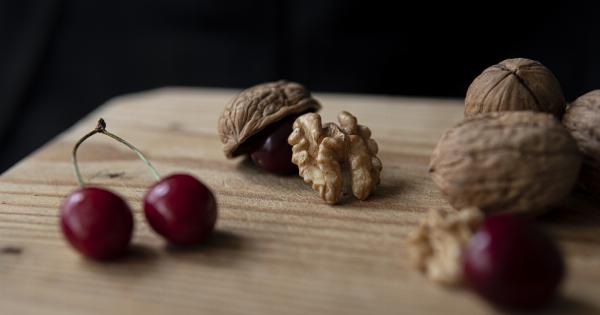Metabolism is the sum of all the chemical processes within the body that sustain life. It is the process by which the body converts food into energy. Metabolism is essential for maintaining a healthy weight and overall health.
The 90-10 rule is a simple way to improve your metabolism by making small changes to your diet and lifestyle. Here are 30 simple steps you can take to apply the 90-10 rule for increased metabolism:.
Step 1: Start with a Healthy Breakfast
Your breakfast sets the tone for the rest of your day. Starting with a balanced breakfast can help increase your metabolism. Eat foods that are high in protein such as eggs, Greek yogurt, or oatmeal.
Step 2: Drink Water Throughout the Day
Drinking water can help boost your metabolism by up to 30%. Drink at least 2 liters of water throughout the day to stay hydrated and improve your metabolism.
Step 3: Eat Lean Proteins
Protein is the building block of muscle and can help increase your metabolism. Eat lean proteins such as chicken, turkey, lean beef, fish, and tofu.
Step 4: Choose Whole Foods
Whole foods are foods that are minimally processed and contain no added sugars. Eating whole foods can help regulate your blood sugar levels and improve your metabolism. Examples of whole foods include fruits, vegetables, and whole grains.
Step 5: Include Fiber in Your Diet
Fiber can help keep you feeling full and reduce your appetite. Eating high-fiber foods such as fruits, vegetables, whole grains, and legumes can increase your metabolism.
Step 6: Limit Processed Foods
Processed foods are high in calories and often contain added sugars and unhealthy fats. Limit your intake of processed foods and opt for whole foods instead.
Step 7: Don’t Skip Meals
Skipping meals can slow down your metabolism. Eat at least three meals a day and make sure to include all food groups such as protein, whole grains, and vegetables.
Step 8: Get Enough Sleep
Lack of sleep can slow down your metabolism. Aim for at least 7-8 hours of sleep every night to keep your metabolism running smoothly.
Step 9: Stay Active
Regular physical activity can increase your metabolism. Incorporate at least 30 minutes of moderate exercise into your daily routine such as walking, biking, or swimming.
Step 10: Lift Weights
Strength training can help increase your muscle mass and boost your metabolism. Incorporate weight lifting into your routine at least twice a week.
Step 11: Eat Spicy Foods
Spicy foods can increase your metabolism. Add spices such as cayenne pepper or chili powder to your meals to give your metabolism a boost.
Step 12: Drink Green Tea
Green tea contains antioxidants and can help increase your metabolism. Drink at least one cup of green tea per day to reap the benefits.
Step 13: Eat Small, Frequent Meals
Eating small, frequent meals can help keep your metabolism running efficiently. Try eating five to six small meals per day instead of three large meals.
Step 14: Include Healthy Fats in Your Diet
Healthy fats such as monounsaturated and polyunsaturated fats can help boost your metabolism. Eat foods such as avocados, nuts, and seeds to get these healthy fats into your diet.
Step 15: Stay Hydrated
Drinking enough water can help keep your metabolism running smoothly. Aim for at least 2 liters of water per day to stay hydrated.
Step 16: Eat Breakfast Within an Hour of Waking up
Eating breakfast within an hour of waking up can help kickstart your metabolism for the day. Eat a balanced breakfast that includes protein, whole grains, and fruits or vegetables.
Step 17: Limit Alcohol Intake
Alcohol can slow down your metabolism. Limit your alcohol intake to one drink per day or less to keep your metabolism running smoothly.
Step 18: Practice Mindful Eating
Mindful eating can help increase your metabolism by reducing stress and improving digestion. Pay attention to your food and eat slowly and mindfully.
Step 19: Limit Sugar Intake
Sugar can lead to weight gain and slow down your metabolism. Limit your intake of added sugars and opt for whole foods instead.
Step 20: Eat Your Vegetables
Vegetables are high in fiber and can help keep you feeling full. Eating a variety of colorful vegetables can help increase your metabolism and improve your overall health.
Step 21: Limit Refined Carbohydrates
Refined carbohydrates such as white bread and pasta can spike your blood sugar levels and slow down your metabolism. Limit your intake of refined carbohydrates and opt for whole grains instead.
Step 22: Eat More Iron-Rich Foods
Iron is essential for a healthy metabolism. Eat iron-rich foods such as red meat, spinach, and lentils to boost your metabolism.
Step 23: Stay Away from Fad Diets
Fad diets can slow down your metabolism and lead to weight gain. Stick to a balanced diet that includes all food groups to keep your metabolism running smoothly.
Step 24: Eat Protein with Every Meal
Eating protein with every meal can help increase your metabolism. Eat lean proteins such as chicken, turkey, fish, and tofu to get enough protein into your diet.
Step 25: Eat More Omega-3 Fatty Acids
Omega-3 fatty acids can help increase your metabolism and improve your overall health. Eat foods such as fatty fish, nuts, and seeds to get enough omega-3s into your diet.
Step 26: Use Healthy Cooking Methods
Cooking methods can affect the nutrient content of your food. Use healthy cooking methods such as grilling, baking, or steaming to retain the nutrients in your food and boost your metabolism.
Step 27: Incorporate HIIT Workouts
High-intensity interval training (HIIT) can help increase your metabolism by boosting your heart rate and burning calories. Incorporate HIIT workouts into your routine at least once a week.
Step 28: Snack on Healthy Foods
Snacking on healthy foods can help keep you feeling full and prevent overeating. Choose snacks such as fruits, vegetables, nuts, and seeds to increase your metabolism.
Step 29: Practice Stress-Reducing Activities
Stress can slow down your metabolism. Practice stress-reducing activities such as yoga, meditation, or deep breathing to keep your metabolism running efficiently.
Step 30: Consult a Healthcare Professional
If you are struggling with weight gain or a slow metabolism, consult a healthcare professional. They can provide personalized advice and recommend medical treatments if necessary.






























